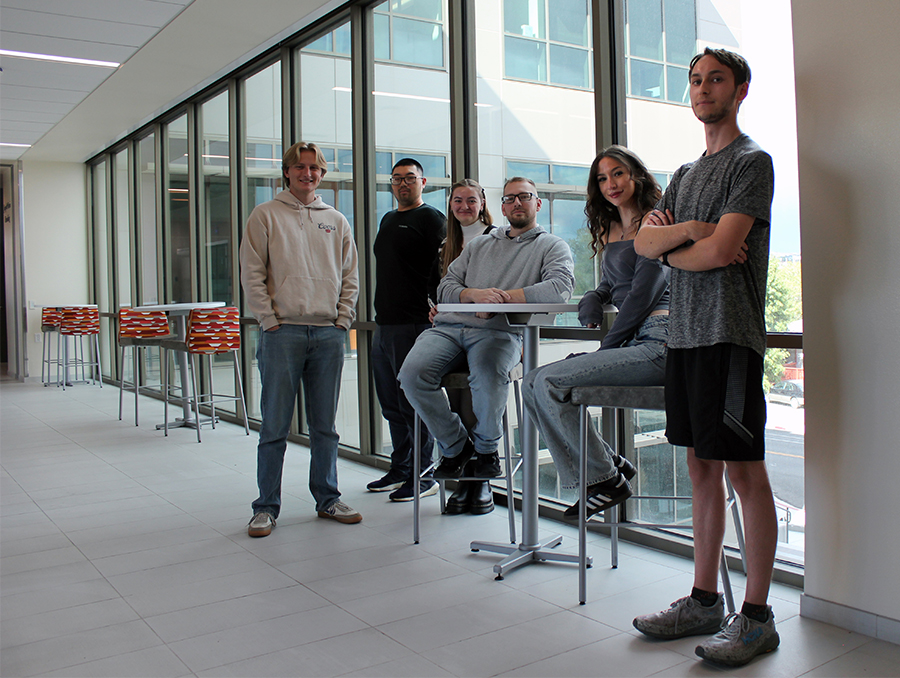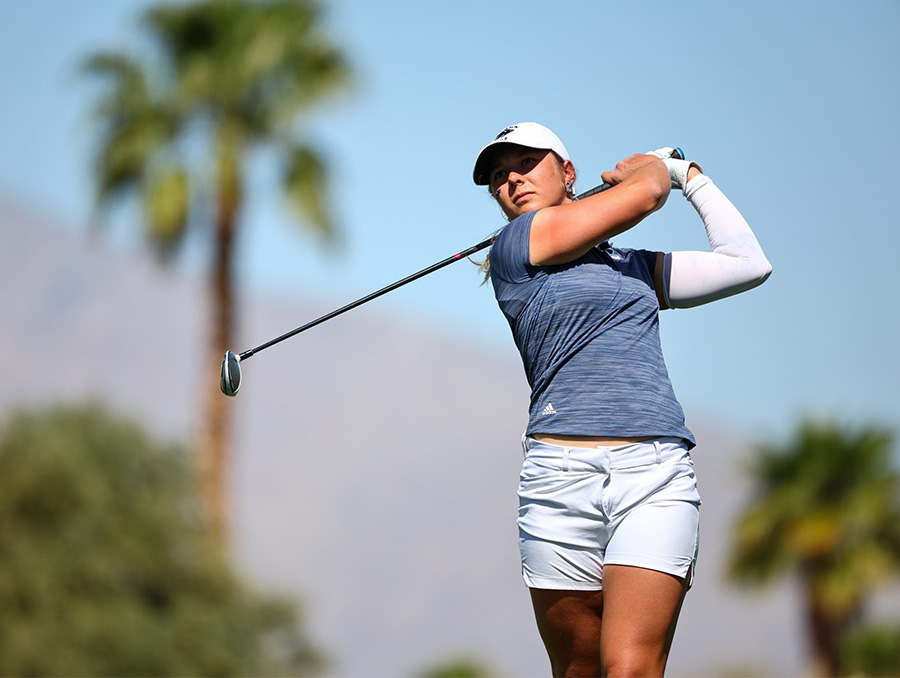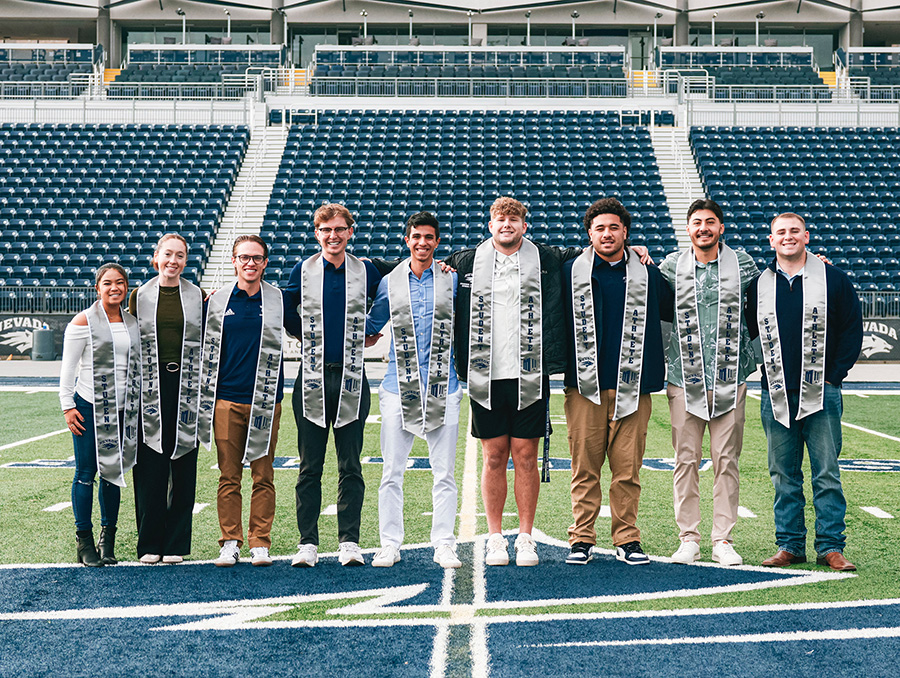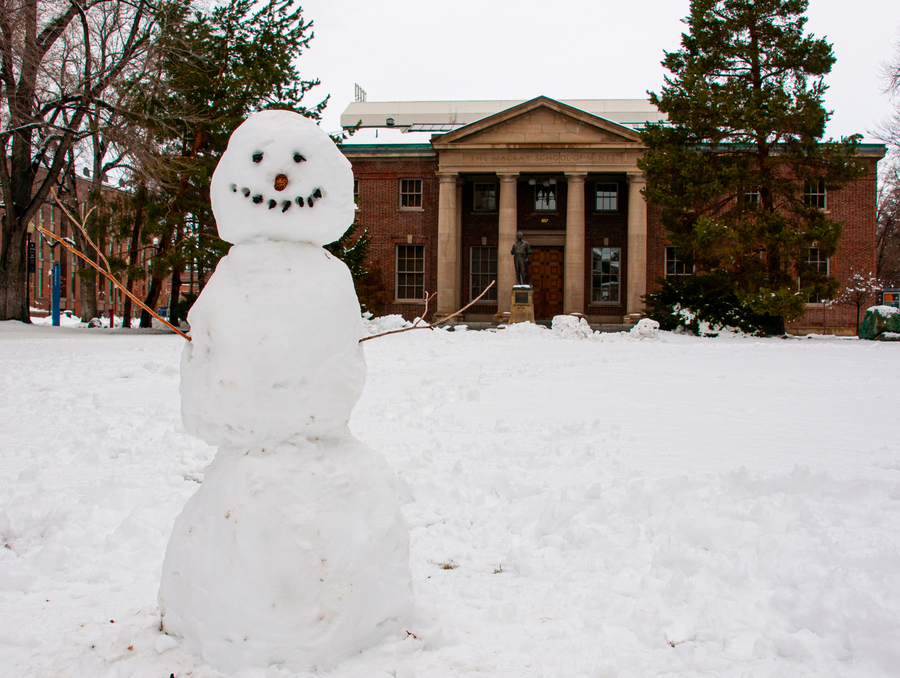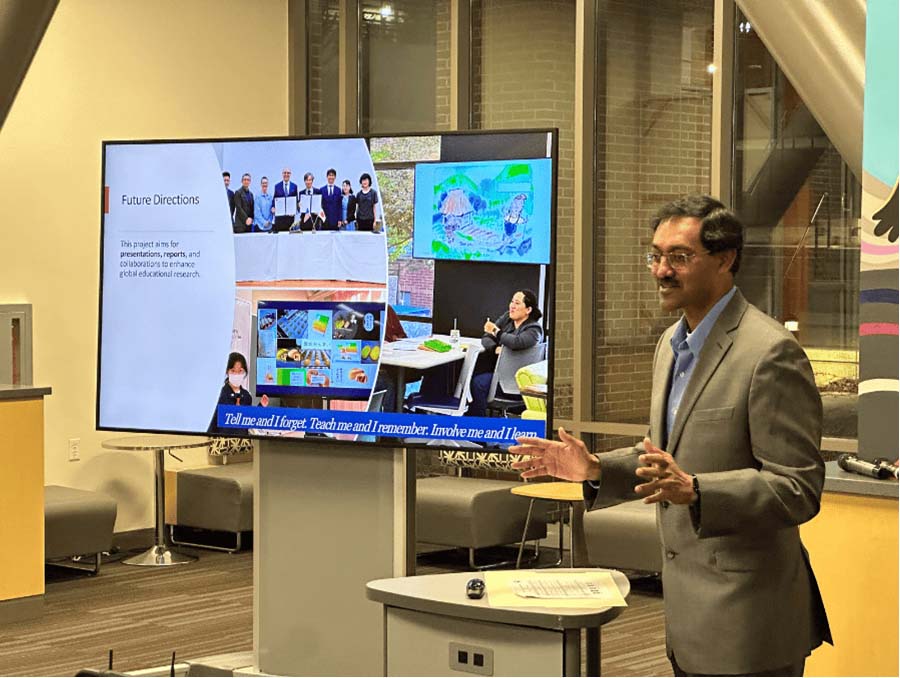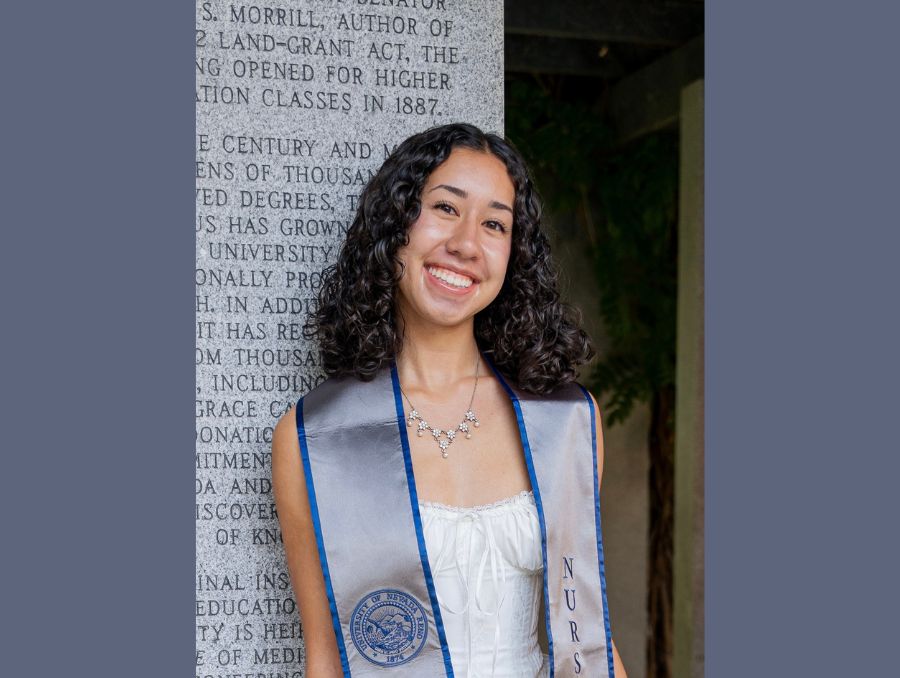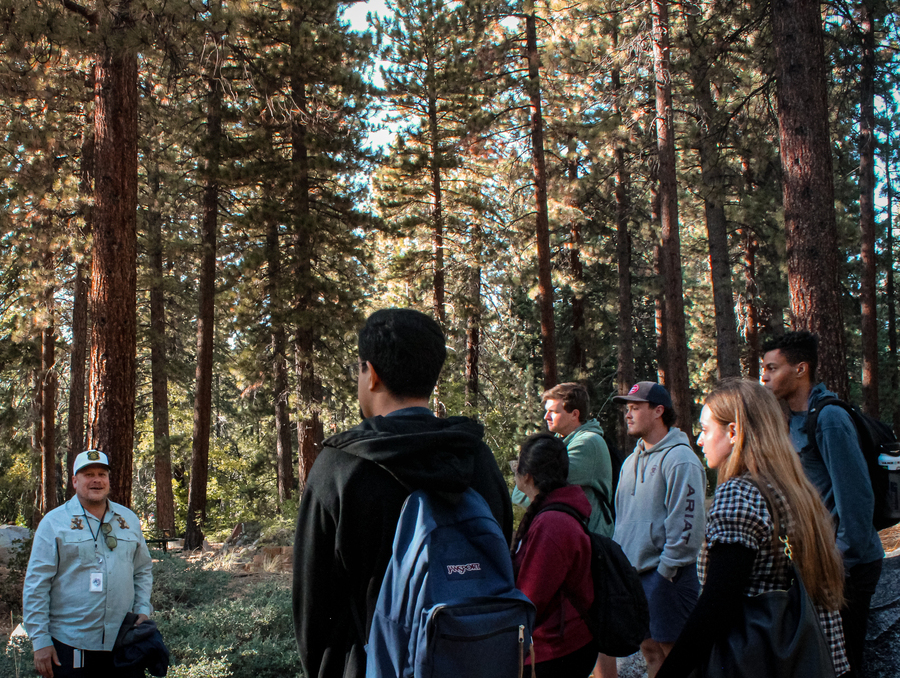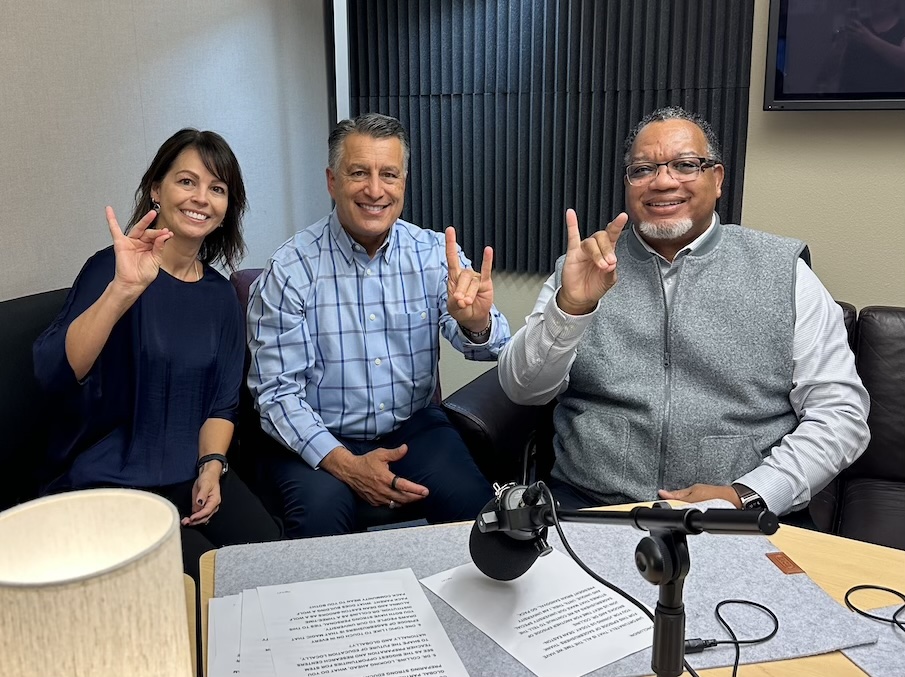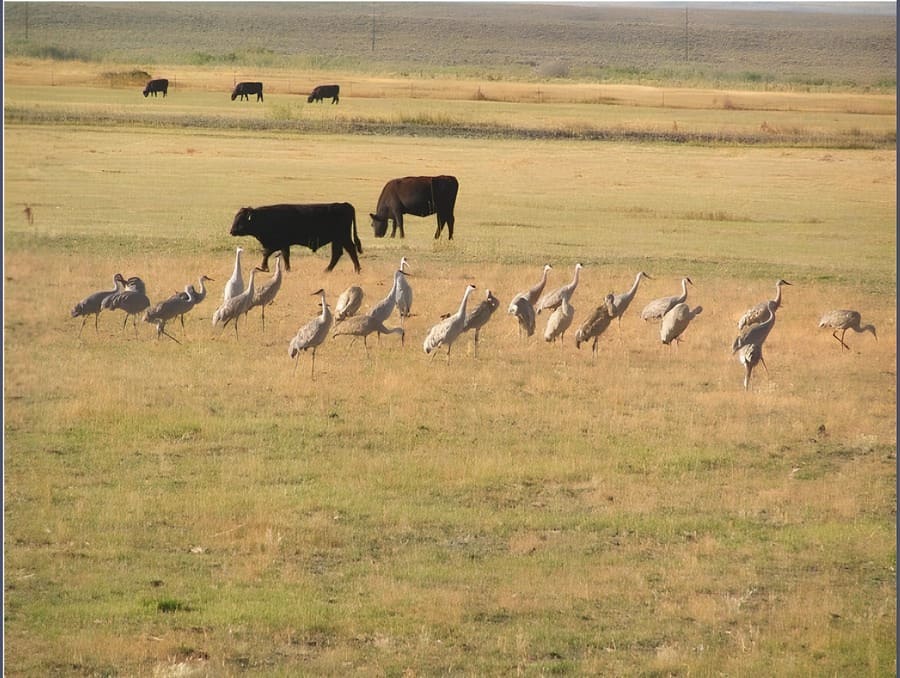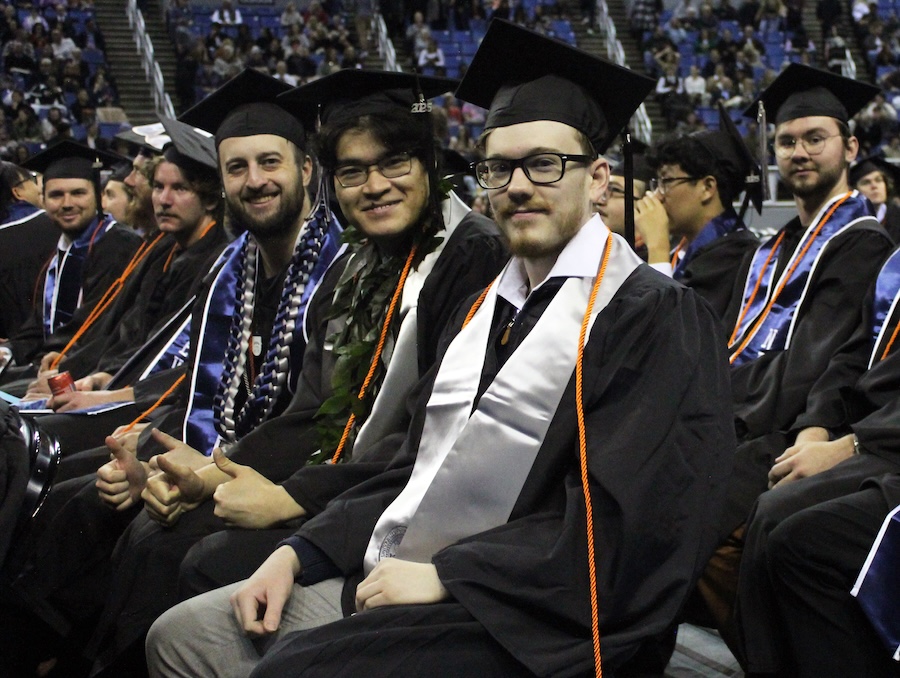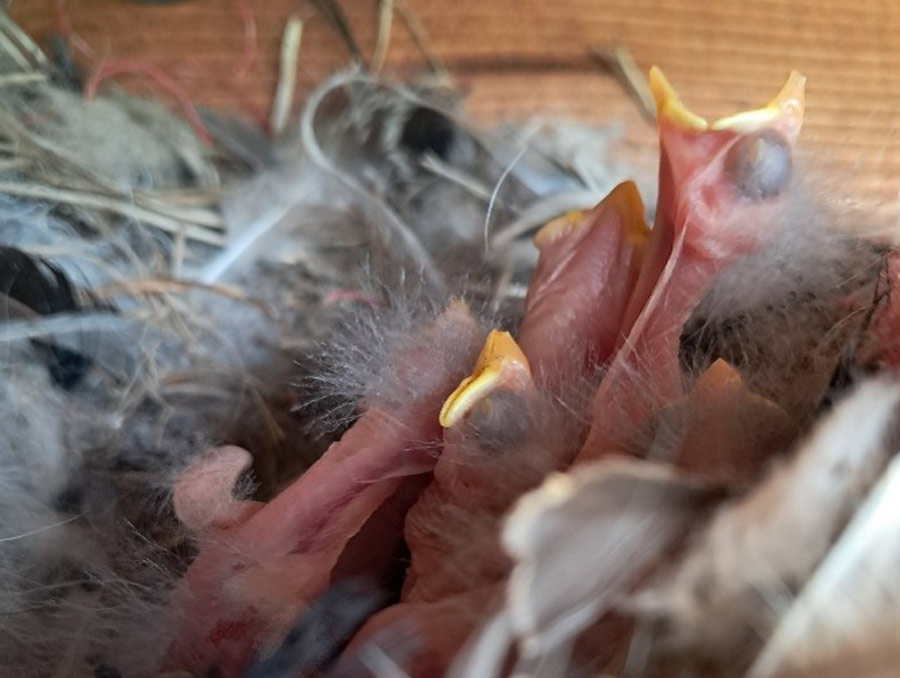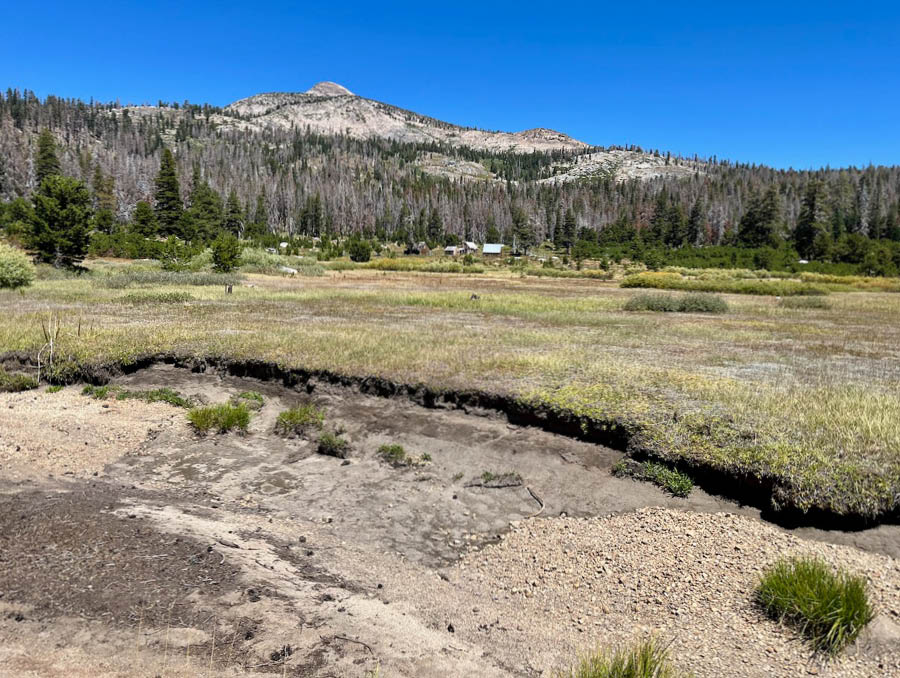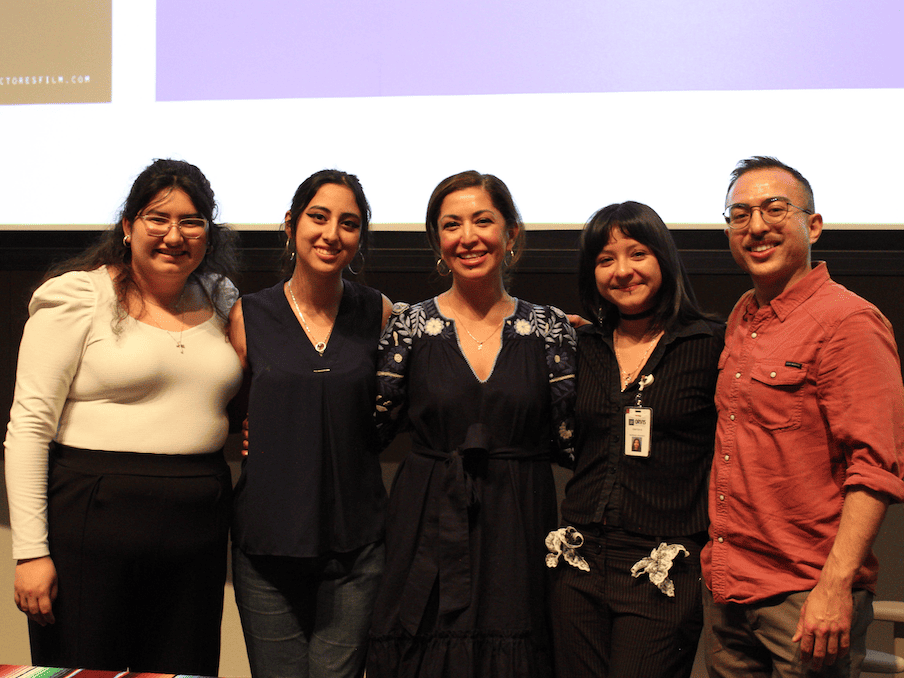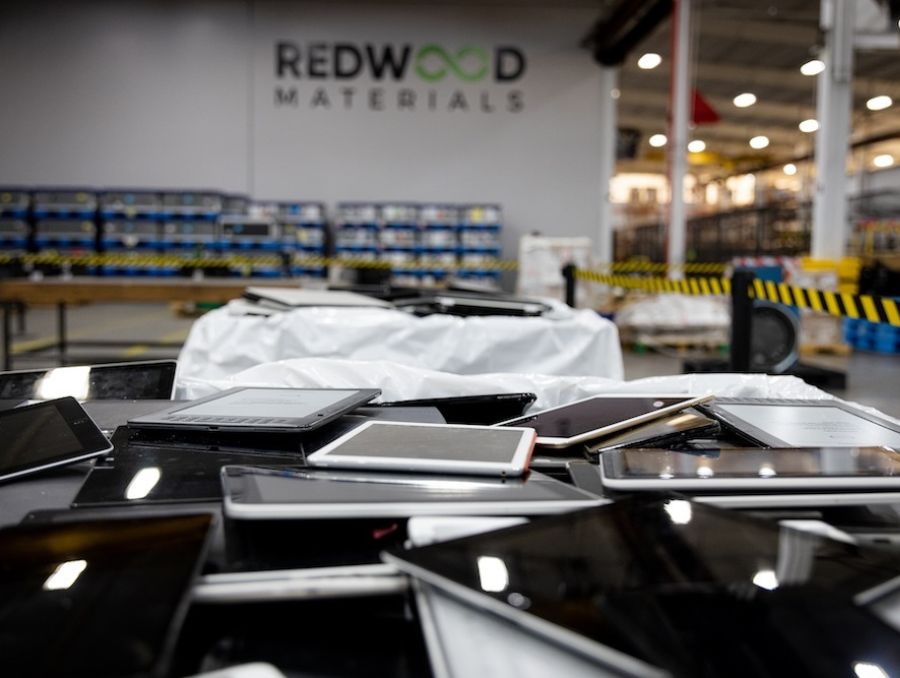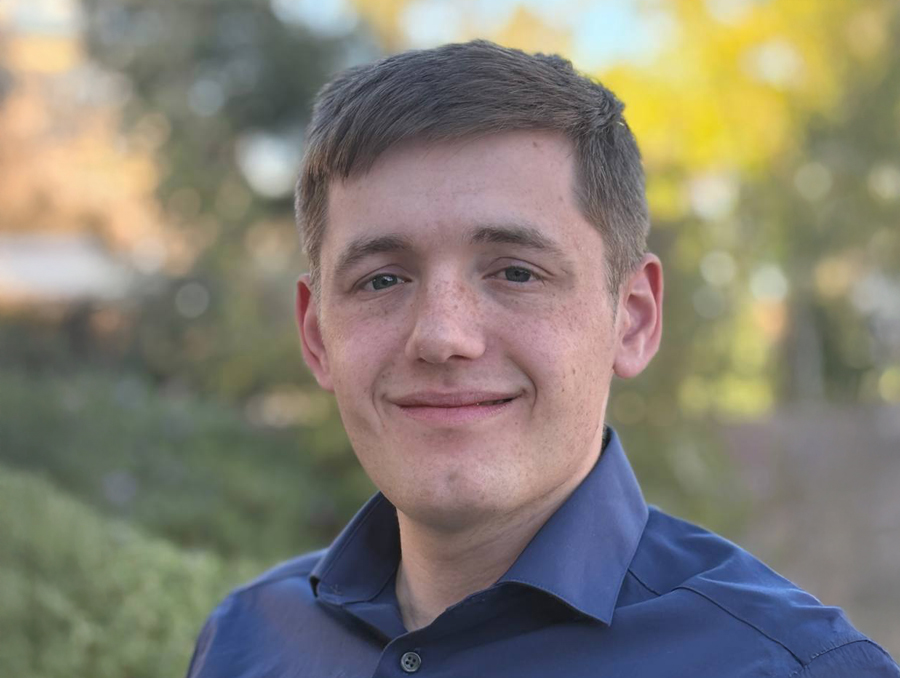When the weekly hang is in the William Pennington Engineering Building and the conversation is about gravitational force and laws of motion, then the friend group is the Roller Coaster Club.
“I wanted to do something with my friends that we all shared a passion for,” Stephen “Kyle” Bard, club president and mechanical engineering major, said.
Or, if he’s being completely honest, he wanted to do something he was passionate about — with his friends.
“They're not as passionate about roller coasters as I am,” he admitted, “but I was able to talk them into it, like, hey, it's good for your career. Because with roller coasters, you can involve any engineering discipline, and they … went along with it.”
So began the Roller Coaster Club in 2024, with Bard’s girlfriend Heather Amistani, a computer science major, serving as vice president and treasurer, and friend Calvin Lu, an electrical engineering major. The club, which has about eight active members, is designing a roller coaster with a clothoid loop — a teardrop shape — and plans to 3D print a model of it by the end of the fall semester. In mid-October, Bard and club member Brandon Mick, a mechanical engineering major, traveled to Scottsdale, Arizona, to attend a meeting of ASTM International’s F24 Amusement Rides and Devices Committee to network and learn about new technologies in amusement park rides.
“It’s so exciting to see this club bring just about every engineering discipline together towards a real-life project,” Engineering lecturer and club advisor Gabrielle Bachand said. “Their collaboration has been such a joy to see, and they have been truly integrating and highlighting the various strengths from each engineering field to create something unique.”
‘This technology could change the future of roller coasters’
Roller coasters have come a long way since their roots in the ice slides of 17th century Russia, and Wolf Pack engineers have been a part of that expansive story. Ron Toomer, a 1961 Mechanical Engineering graduate, developed the Corkscrew, the world’s first roller coaster with two inversions, which had its 1975 debut at Knott’s Berry Farm in Buena Park, California. Since then, the technology behind thrill rides has advanced, and one of the latest ideas has captured the club’s attention.
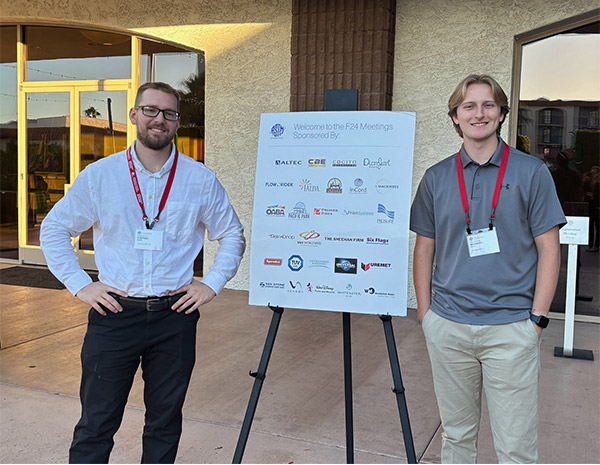
“This technology could change the future of roller coasters,” Bard said.
Adaptive spike motor (ASM) launch technology, developed by German company Mauer Rides, proposes a drive system and gear track that differs from traditional roller coasters by allowing acceleration, deceleration and speed can be controlled throughout the ride layout, rather than relying on the initial launch.
In other words: that long, nerve-wracking climb that’s usually at the start of most roller coaster rides? It’s necessary because the drop provides the energy to power the rest of the ride. If there’s no climb, a coaster typically will have an initial launch system to propel it forward.
But with ASM launch technology, multiple launches could occur at different points in the ride, among other advantages.
“This would give the (ride) designers a lot more leeway,” Bard said.
And for people who love roller coasters — say, people in a roller coaster club — that could be a game-changer.
'Who doesn’t love roller coasters?’
Bard got interested in ASM launch technology after researching roller coaster companies during his summer 2024 internship at Universal Creative, which designs, develops and creates amusement park rides.
“I went down a rabbit hole of research on what companies are doing what, and I found out that Mauer was doing this new technology,” he said.
It intrigued him enough to write a speech, “Advancing Roller Coasters with Adaptive Spike Motor Technology,” which won the College of Engineering’s Madani-Gordaninejad Speech Competition last spring.
Around the same time, Bard was taking ME 450 Additive Manufacturing Technology with Assistant Professor Yifei Jin and got interested in 3D printing.
“OK, yeah, my passions are everywhere,” he said
This new interest changed the club’s direction. Instead of entering roller coaster design competitions, the group would design and 3D print a scale model of a coaster that reverse-engineered the ASM launch technology.
Amistani (the girlfriend) and Liu (the friend) went along for the ride. She is “coding everything,” Bard said, while Liu is working on the communications system. Newer club members have also been put to work: Mick, who traveled with Bard to the ASTM meeting earlier this month, is working on the vehicle drive system; Erin Barton is researching the coaster’s dual track system; and Tyler Reinhardt is looking at track design.
“This semester, I really wanted to get more people involved,” Bard said. “Who doesn’t love roller coasters, right?”
